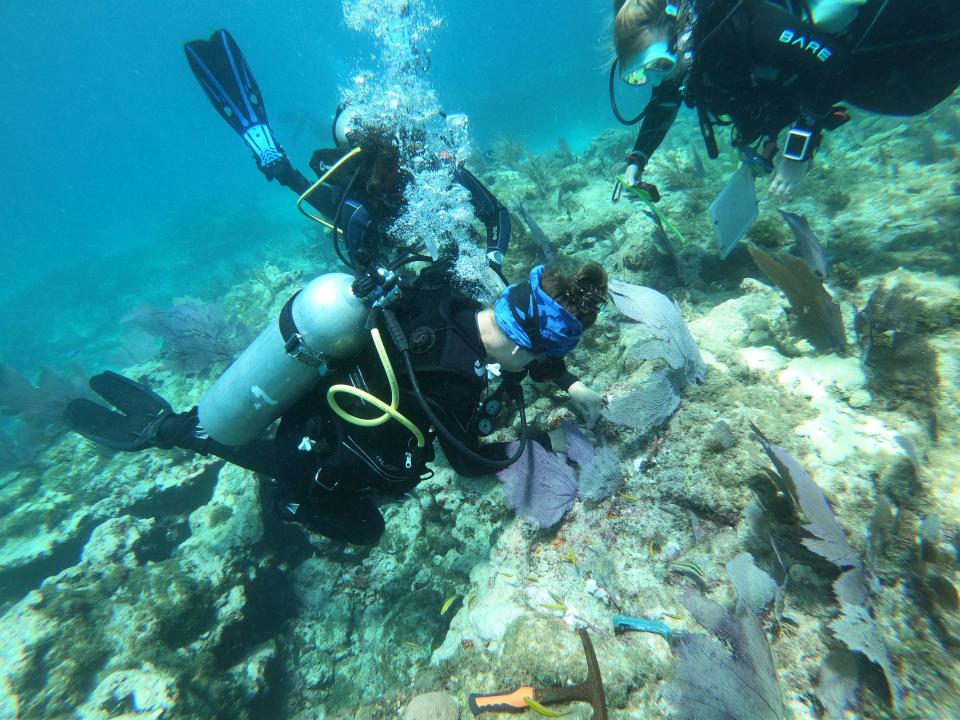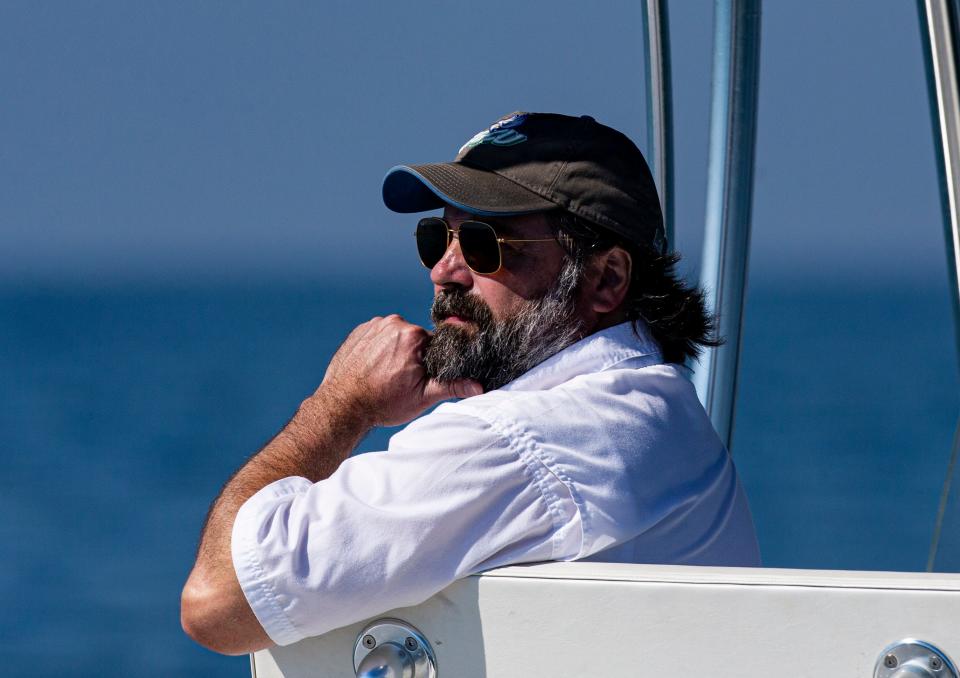Florida weather: Are we in 'hot water'? As temperatures rise, experts' concerns wide-ranging
Note to readers: The News-Press and Naples Daily News are providing special coverage this week of all things weather in Southwest Florida as a new hurricane season is about to start (June 1).
Gulf of Mexico and Atlantic Ocean temperatures are running a few degrees above normal for this time of year, and warm-water impacts this summer and fall could range from enhanced tropical storm and hurricane formation to more blue-green algae blooms.
Water temperatures in Southwest Florida are hovering in the high 80s, according to the Nation Oceanic and Atmospheric Administration, or NOAA.
"Extreme warm waters can be problematic for numerous marine organisms, and the ecosystems they form," said Ian Enochs, head of the sea coral program at NOAA's Atlantic Oceanographic & Meteorological Laboratory. "This is particularly true if the warm conditions last for a long time, when animals are unable to escape from the temperature stress day in and day out. This is very evident on coral reefs, where corals often live right at the limit of their temperature tolerances. If waters are too hot for too long, corals can turn white or 'bleach' as their relationship with helpful symbiotic algae is disrupted."

The News-Press documented this type of damage in the Florida Keys in 2022, following scientists and anglers to see impacts warmer waters have had on the coral and even the flow of the Gulf Stream.
More coral damage in Florida Keys has occurred since
Last year a marine heat wave started in the Gulf of Mexico in April, and waters continued to warm throughout the summer.
"Around here we didn't really see a whole lot," said Mike Parsons, a Florida Gulf Coast University professor and member of the state's Blue-Green Algae Task Force. "I think the biggest concerns would have been blue-green algae but we didn't get big blooms. But when temperatures get high that's part of it, and that brings in bacteria."
Warmer waters increase the metabolic activity in bacteria, and warmer water holds less oxygen than cooler water, Parsons pointed out.
More: The man who duels with swordfish is alarmed: Famous fisherman sees worrisome ocean changes
"There was some concern that oxygen would really, really drop and that could cause fish kills," he said.
Rising ocean temperatures can cause everything from damage to marine ecosystems to adding fuel to developing tropical storms and hurricanes.
And although Southwest Florida didn't see much in the way of ecological impacts in the Gulf, the Keys were a different story.

"There was coral bleaching and coral mortality, and corals were being overgrown with stringy micro-bacteria," Parsons said. "And it's easily visible. And some of the highest water temperatures ever recorded in the Key were recorded there last year.
Rapid intensifications of tropical storms and hurricane a big concern
Locally, blue-green algae are red tide of the ecological concerns, and water temperatures are already high again this year.
"It's really starting to warm up," Parsons said. "For blue-green algae in the freshwater it would be a big concern and in the marine environment the concern would be oxygen. Red tide typically does not like it when it gets hot. It typically starts in October and ends in February, so it's more of a winter thing."
Larger tropical storms and hurricanes are a major concern with higher water temperatures.
More: Active hurricane season ahead: Lee public safety director talks about being prepared
"The big concern is rapid intensification, so as it moves into the shallower water and warmer waters, how much can that fuel the storms," Parsons said. "It's pretty concerning."
Conditions could have been worse last year as an El Niño was in place.
"Despite a strong El Niño in the Pacific, which normally reduces Atlantic hurricane activity because of unfavorable upper-atmospheric winds, hurricane activity was well above normal in the Atlantic, due in large part to a record warm North Atlantic Ocean," said Gregory Foltz, an oceanographer with NOAA. "This year, the Atlantic Ocean is still much warmer than normal, and we expect a transition to La Niña conditions in the Pacific."
Enochs said the warmer waters have an economic impact that is growing as well.
"As our oceans continue to warm, we can expect more coral mortality, the loss of beautiful reef ecosystems, and severe ramifications for the important goods and services that they provide to our economies," Enochs said
A marine heat wave known as the Blob in the North Pacific Ocean last from 2013 to 2016 and cause damages to fisheries and ecosystems there.
"The Blob caused whales’ prey to be concentrated unusually close to shore, and a severe bloom of toxic algae along the coast delayed opening of the valuable Dungeness crab fishery," a NOAA website reads. "Humpback whales moved closer to shore to feed in some of the same waters targeted by the crab fishery, resulting in a then-record 53 whale entanglements in 2015 and 55 in 2016."
This article originally appeared on Fort Myers News-Press: Stronger storms, toxic blooms possible with warmer water temperatures

